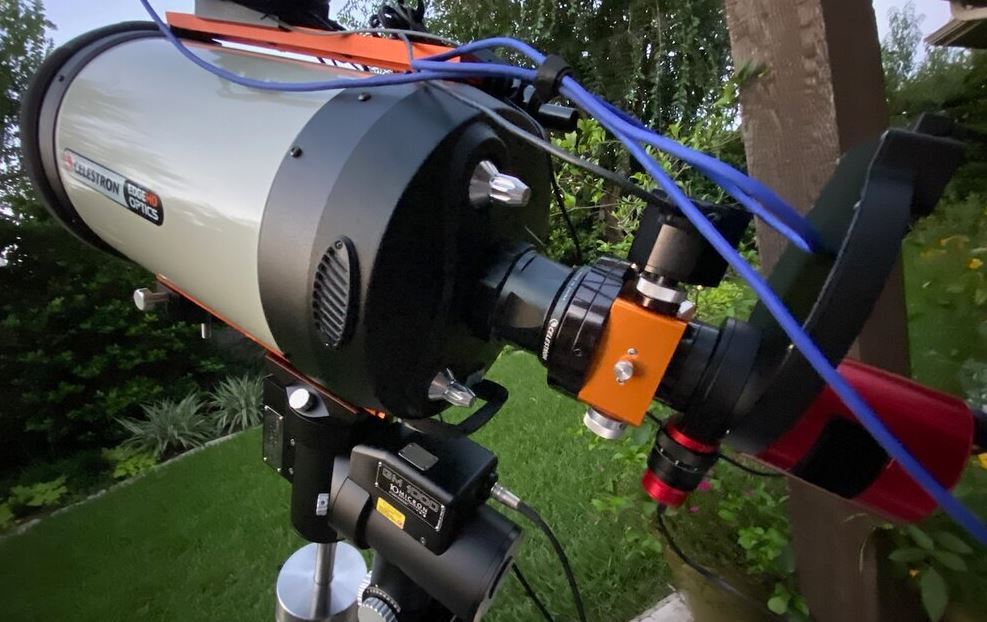Astronomy Camera: Color or Mono? Which One Should You Choose?
Astronomy cameras are an essential tool for capturing images of the night sky. They allow astronomers and astrophotographers to capture stunning images of stars, planets, and galaxies, and to study the universe in more detail. One question that often arises when choosing an astronomy camera is whether to choose a color or monochrome (mono) camera. In this blog post, we'll explore the differences between color and mono astronomy cameras, and provide tips on how to choose the right one for your needs.
Color Astronomy Cameras
Color astronomy cameras use a filter array to capture images in full color. They are typically more affordable and easier to use than mono cameras, as they do not require additional processing or filters to capture color images. Color cameras are great for capturing colorful images of galaxies, nebulae, and other deep-sky objects.
One disadvantage of color cameras is that they typically have lower sensitivity than mono cameras. This means that they may not be as effective at capturing faint objects, and may require longer exposure times to capture detail. Additionally, color cameras may introduce noise or artifacts into images, especially in low light conditions.
Monochrome Astronomy Cameras
Monochrome astronomy cameras do not have a filter array, and instead capture images in black and white. They are typically more expensive and require additional processing and filters to capture color images. However, mono cameras have higher sensitivity than color cameras, which allows them to capture more detail and faint objects with shorter exposure times.
One advantage of mono cameras is that they allow for more flexibility in post-processing. With the use of filters, astronomers and astrophotographers can capture images in specific wavelengths and create stunning false-color images of the night sky. Additionally, mono cameras tend to produce sharper, higher-quality images than color cameras.
How to Choose the Right Astronomy Camera
When choosing an astronomy camera, there are several factors to consider, including budget, sensitivity, resolution, and flexibility. Here are some tips on how to choose the right camera for your needs:
- Budget: Astronomy cameras can range in price from a few hundred to several thousand dollars. Determine your budget before you start shopping for a camera, and choose one that fits within your price range.
- Sensitivity: Consider the sensitivity of the camera, as well as its noise levels. Higher sensitivity cameras can capture more detail and faint objects with shorter exposure times, but may introduce more noise into images.
- Resolution: Consider the resolution of the camera, as well as the size of its sensor. Higher resolution cameras can capture more detail, but may require more processing power and storage space.
- Flexibility: Consider whether you want a color or mono camera, as well as whether you want the option to use filters or not. This will depend on your personal preferences and the type of images you want to capture.
Tips for Using an Astronomy Camera
Once you have chosen an astronomy camera, there are some tips and tricks you can use to get the most out of your camera and capture stunning images of the night sky.
- Choose the right exposure time: Experiment with different exposure times to find the right one for your camera and the object you are photographing. Longer exposure times may be necessary for faint objects, but may introduce noise into the image.
- Use the right filters: If you are using a mono camera, consider using filters to capture images in specific wavelengths and create stunning false-color images. Even color cameras can benefit from the use of filters to enhance certain features in images.
- Use image stacking: Image stacking involves taking multiple images and combining them into one image to reduce noise and increase detail. This technique is especially useful for faint objects and can help produce stunning images.
- Be patient: Capturing stunning images of the night sky can take time and patience. Take your time and experiment with different techniques to get the best results.
Conclusion
Choosing between a color and mono astronomy camera can be a difficult decision, but understanding the differences between the two can help you make an informed choice. Consider your budget, sensitivity, resolution, and flexibility when choosing a camera, and experiment with different techniques to capture stunning images of the night sky.
Remember that capturing beautiful images of the night sky takes time and patience. With the right equipment, techniques, and a little bit of practice, you can create stunning images of the universe and uncover its mysteries.
More About Astronomy:
- Urban Astronomy
- Astronomy Definition
- Best Books on Astronomy
- The History of Astronomy
- Famous Astronomers
- Astronomy vs Astrology
- Binocular vs Spotting Scope for Astronomy
More Camera Topics:
- When Was the Camera Invented?
- Who Invented The Camera?
- What is ISO in Photography
- Best Planetary and Lunar Cameras
- Mirrorless Camera vs DSLR
- Canon M50 Review
- Nikon D5600 Review
- Canon EOS R6 Review
- Best Lens for Astrophotography Canon
- Best Lens for Astrophotography Nikon
- Best Lens for Astrophotography Sony A7iii
- Best Lens for Astrophotography Fujifilm
- Best Lenses for Astrophotography
- Best Camera for Astrophotography
- Astrophotography Camera Settings

